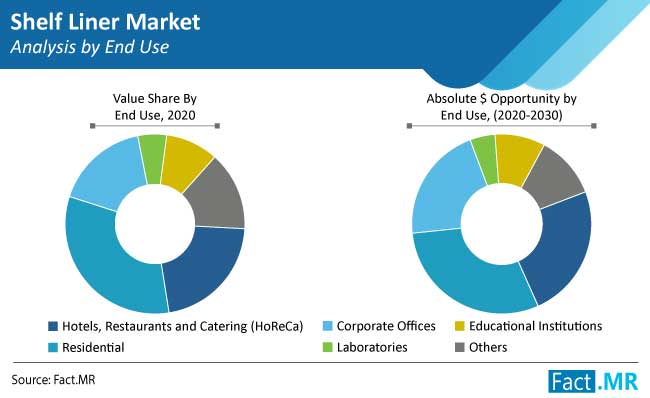Shelf Liner Market In the world of home organization and interior design, shelf liners might seem like a humble addition, often overlooked. However, these unassuming products play a vital role in safeguarding surfaces, enhancing aesthetics, and promoting cleanliness. The shelf liner market, once seen as purely functional, has evolved into a dynamic industry that offers a myriad of options for homeowners seeking both practicality and style. This article delves into the expanding shelf liner market, highlighting its significance, innovations, applications, and the ways it contributes to both organization and personal expression.
For More insights into the, Request a Sample of this Report:
Functionality Beyond the Surface
Shelf liners serve as a protective barrier between various surfaces and the items placed upon them. Their functional benefits extend to:
Surface Protection: Whether it’s a kitchen cabinet, a pantry shelf, or a bathroom drawer, shelf liners shield surfaces from scratches, stains, and everyday wear and tear.
Grip and Stability: Shelf liners with anti-slip properties prevent items from sliding around, making them ideal for use in drawers, shelves, and even inside refrigerators.
Cleanliness: Easy to clean and maintain, shelf liners act as a barrier against spills, moisture, and dirt, ensuring a hygienic and tidy environment.
Market Innovations and Versatility
The shelf liner market has evolved from simple, utilitarian rolls to a diverse range of innovative options:
Decorative Patterns: Today’s shelf liners come in an array of colors, patterns, and designs, allowing homeowners to express their personal style while keeping their spaces organized.
Eco-Friendly Choices: With sustainability on the rise, eco-friendly shelf liners made from materials like recycled plastic or natural fibers are gaining popularity.
Easy Installation: Self-adhesive and pre-cut liners make installation a breeze, saving time and effort for consumers.
Applications Across Spaces
Kitchen and Pantry: Shelf liners protect kitchen cabinets, drawers, and pantry shelves from spills, stains, and damage. They also enhance the visual appeal of storage spaces.
Bathroom and Vanity: Liners in bathroom cabinets and vanities prevent moisture-related damage and keep toiletries neatly organized.
Closets and Wardrobes: Shelf liners maintain the integrity of clothing and accessories stored on shelves while adding a touch of elegance to closets.
Garages and Workspaces: Heavy-duty liners are ideal for garages and workshops, offering durability and protection for tools and equipment.
Consumer Choices and Trends
Customization: Consumers are increasingly seeking personalized solutions, leading to a rise in customizable shelf liners that fit specific spaces and sizes.
Multipurpose Functionality: Some shelf liners are designed to be easily repurposed, allowing users to switch them between different spaces or applications.
DIY Home Projects: As DIY culture gains momentum, individuals are incorporating shelf liners into creative home projects, such as lining shelves inside cabinets, decorating furniture, and even crafting.
Conclusion
The shelf liner market, once a niche corner of the home organization industry, has blossomed into a vibrant and diverse landscape that caters to a wide range of consumer preferences. From practical protection to expressive decoration, shelf liners have become an integral part of creating organized, visually appealing, and functional living spaces. As homeowners continue to prioritize aesthetics, functionality, and sustainability, the shelf liner market stands ready to provide innovative solutions that transform mundane storage spaces into showcases of style and efficiency.
